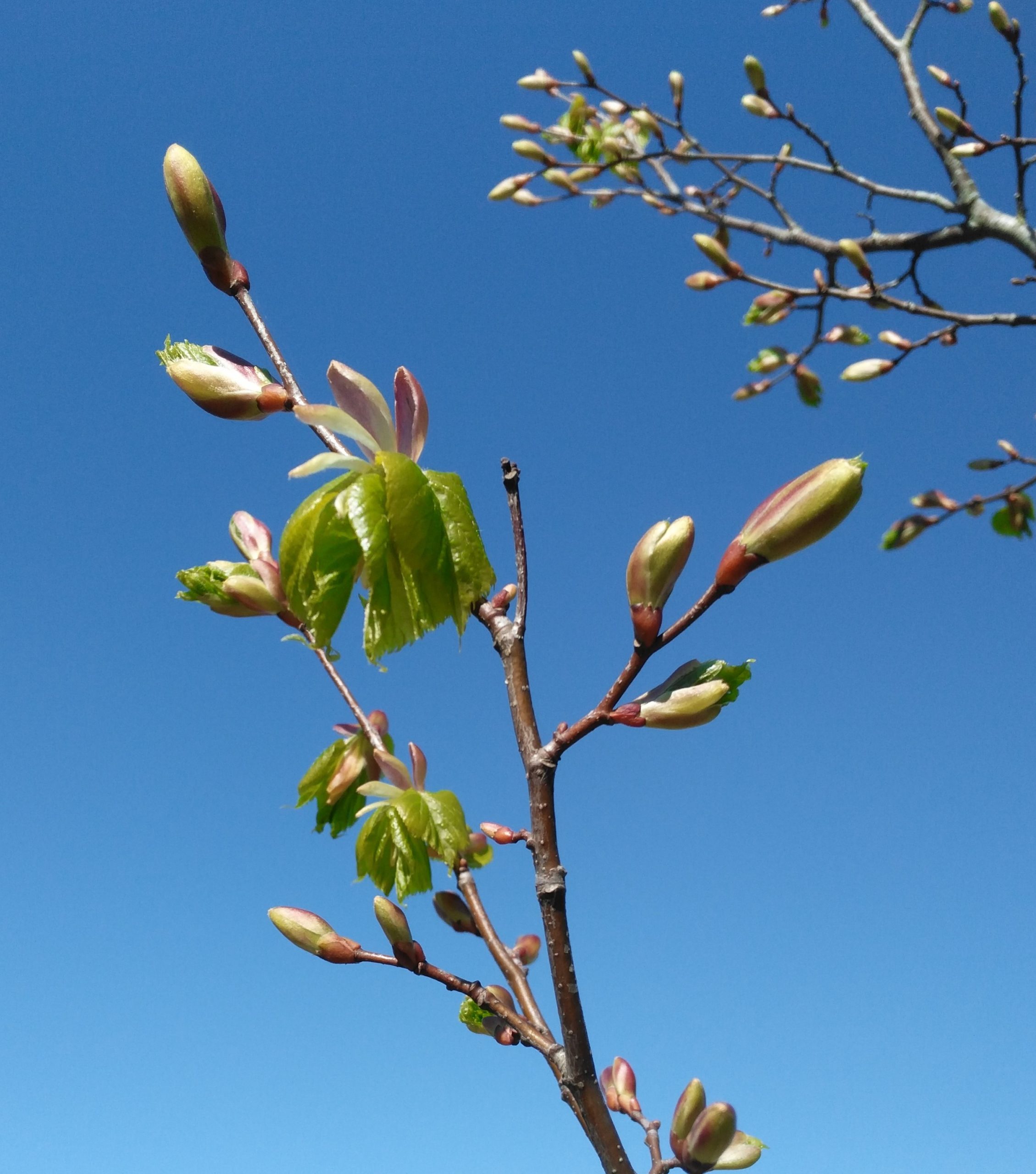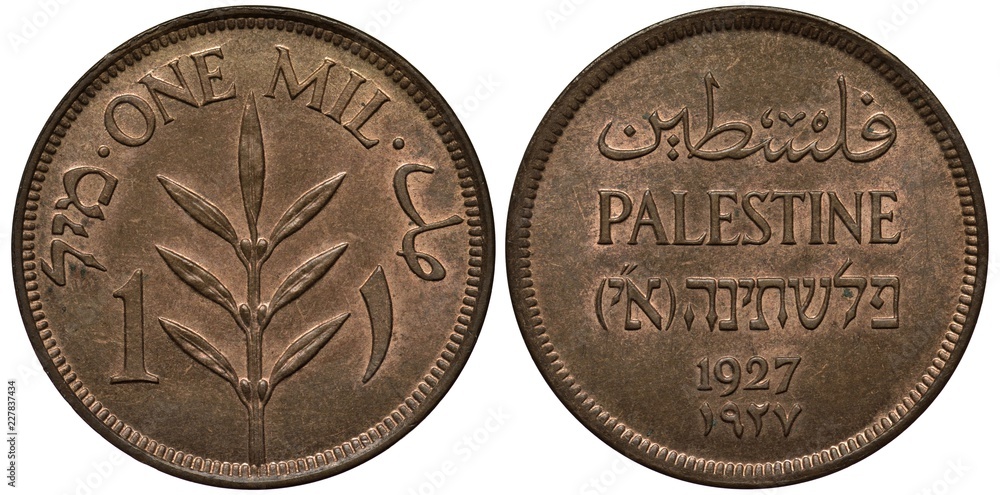"And the glory of the Lord will be revealed and all humanity
together will see it. For the mouth of the Lord has spoken."
(Isaiah 40:5)
It was near the close of our Lord's earthly ministry that His disciples came to Him
and asked: "What shall be the sign of Thy coming and the end of the world?"
In reply, Christ uttered the parable of the fig tree which is recorded in each of
the three synoptic Gospels*. He declared that when the fig tree would begin to shoot
forth and to put forth leaves, then the Kingdom of God would be near at hand.
His prophetic statement is given in Luke 21:28-31:
"And when these things begin to come to pass, then look up, and lift your
heads; for your redemption draws near." And He spoke to them a parable:
"Behold the fig tree, and all the trees; when they now shoot forth, you see
and know of your own selves that summer is now nigh at hand.
So likewise, when you see these things come to pass, know that
the Kingdom of God is near at hand."
It is quite generally agreed that the fig tree in Scripture stands for Israel.
Thus when Christ speaks of the budding of the fig tree, He refers to the
renaissance of the national life of the Jews. Surely, no one with eyes to
see and ears to hear can deny that the Jewish nation is being revived in a
marvelous and miraculous manner, not in some new location, but in the
land that God gave to Abraham and his seed by an everlasting covenant.
The people that have been scattered to the ends of the earth for nearly nineteen
centuries, and have been without a home and a temple and a sacrifice, and have
endured untold persecutions precisely as predicted by Moses more than
3,000 years ago-that same people have been given back their ancient
homeland, and are returning to it by scores of thousands annually,
and the land that has lain waste and desolate for centuries
is once more blossoming as the rose.
In the light of these things can anyone honestly say that the fig tree of the
Jewish national life is not budding and putting forth leaves?
If further proof is needed, let me give another interesting illustration of the
budding of the fig tree as foretold by our Lord. One morning in Jerusalem
I was sitting in the private office of the manager of the Barclays Bank in
Palestine. The bank mints the money for the government of Palestine.
In the midst of our conversation, he put his hand in a drawer of his
desk and pulled out three Palestine bank notes.
One was for a half a pound, one for a pound, and the other for five pounds.
He said, "Look at the number on these notes." Leaning forward, I looked at
the notes carefully and saw half a dozen or so with ciphers with the figure
one at the right of them. Then the manager said significantly, "Those are
the first currency notes printed in Palestine since the time of Christ's
earthly ministry." You can imagine the thrill I experienced as I looked
upon the first money issued in Palestine for more than 1900 years!
It was a Hebrew Christian with whom we stayed in Jerusalem who called
my attention to a very striking thing on the coins that are in use in Palestine
today. The one hundred mils coin, which is worth fifty cents in our money,
bears on its face an olive branch. Around the inner rim of the coin it has the
word, "Palestine" in English and Arabic and Hebrew. (It is well known that
the name, "Palestine" is derived from the ancient Philistines. However, the
Word of God constantly calls the territory, the "land of Israel.")
My friend pointed out that after the word "Palestine" in Hebrew, on this
and all the Palestine coins, there are two Hebrew characters in parentheses.
These two Hebrew characters are "aleph" and "yod". They are the first
letters of the words, "Eretz Israel" meaning, "Land of Israel."
Note: The Hebrew language is read right to left.
There it is, "Land of Israel" stamped on the very currency of the
country by the authority of the British Government.
It is probable that comparatively few of the Arabs living in Palestine are
aware of these initials, indicating that the land is Israel's, are stamped on
the coins of the country. My friend said he pointed out the initials on the
coins, and explained their meaning to an Arab official. The man became
very angry but he could do nothing about it for those initials were
placed there by the action of the government.
These same letters, aleph and yod in parentheses, appear not only on the coins
but also on the postage stamps and on all the official documents of Palestine.
This issuing of currency in the "Land of Israel" after a lapse of more than
nineteen hundred years is another striking proof that the national life of
Israel is being revived and that the fig tree is today shooting forth and
putting forth leaves. Another interesting fact showing the budding of
the fig tree lies in the renaissance of the Hebrew language.
A number of years ago a well-known Jewish leader, E. Ben Yehuda,
started a movement in Palestine to revive the Hebrew language as the
daily speech of the people. The campaign spread rapidly and today
pure Hebrew is the national language of the Jews throughout
the length and breadth of Palestine.
This is all more remarkable because of the fact that during the long centuries of
their dispersion the Jews spoke the languages of the lands where they were living.
But now at last when they have returned to the homeland they are once again
conversing in the speech their forefathers used in the heyday of their national life.
Many books in the classical language of the Old Testament are being
published in Palestine. The results of the agricultural researches are being
put out in circulars, leaflets, and books, in pure Hebrew. The language
that has been for centuries estranged from the soil is once more becoming,
"redolent of the fields and vineyards."
Closely connected with the revival of the Hebrew language is the founding
of the Hebrew University on Mount Scopus, just outside the city of Jerusalem
on the way to the Mount of Olives. There is a splendid faculty of professors
and a large and increasing library. The establishment of this university
has stirred the imagination of both Jews and Gentiles the world over.
One of the most interesting and remarkable things connected with the growth
of the Jewish national life in Palestine is their observance of the Sabbath day.
The entire history of the Jewish people in the pages of the Old Testament is
bound up with their observance of the Sabbath.
Next to their worship of the one true God, this was perhaps the chief
distinguishing feature that set them apart from the surrounding nations.
But during the long dispersion of the chosen people among the Gentile nations,
the institution has more and more fallen into decay. Today, in America and
other lands, the Jew is compelled by necessity to keep open his place of
business on Saturday. But in Palestine at the present time the Sabbath
is being observed by the Jews with much of its old time strictness.
The Shofar or Ram's Horn is blown at sunset on Friday. It is a call to
observe the Sabbath for the twenty-four hours following. In Jerusalem,
some ten of these rams' horns sound out the signal as the sun sinks
below the horizon. And the Jews with one accord heed the call
whether they are Orthodox or liberal or free-thinkers.
The Sabbath in Jerusalem is certainly a day of rest. Not even milk is
delivered, by the Jewish dairies, until after sunset on Saturday. All
Jewish bus lines stop. If we wanted to go to the downtown district
on Saturday, it was necessary to walk or hire a carriage from one
of the few Arab cabbies that were in the district. On the Jewish
Sabbath the synagogues are thronged with worshipers.
Who can witness this striking manifestation of the revival of the
religious life of the Jewish nation and fail to realize that the fig tree
is now putting forth an abundance of leaves?
The Jews are going back to the land of their forefathers in unbelief,
precisely as foretold. The veil still rests upon their hearts and minds
as it did in the days of the Apostle Paul. But the budding fig tree
indicates that the time of the Lord's return in glory is not far distant.
Then Zechariah's prophecy will be fulfilled with the same precision that
the predictions of Isaiah and Jeremiah and Ezekiel are being brought to
pass in Palestine today. Zechariah pictures the poignant grief that will
come upon the people of Israel as they realize that Jesus of Nazareth,
who was crucified on Calvary, whose blood cleanses all from sin,
was none other than their long-promised Messiah.
In Zechariah, chapter 12:10 we read: "And I will pour out upon the house
of David, and upon the inhabitants of Jerusalem, the spirit of grace and of
supplications: and they shall look upon Me whom they have pierced, and
they shall mourn for Him, as one mourns for his only son, and shall be
in bitterness for Him, as one that is in bitterness for his firstborn."
As we see the Jews returning to Palestine by hundreds of thousands; as
we behold the land beginning to blossom as the rose; as we witness the
reviving of the Hebrew language as the daily speech of the people; as
we examine the money of the country and find it stamped with an
olive branch and declaring that Palestine is the "Land of Israel";
as we mark the strict observation of the old Jewish Sabbath-as
we see all these things coming to pass before our eyes today-
we cannot fail to realize in the light of Luke 21:31 that,
"the Kingdom of God is near at hand."
"The Budding Fig Tree"
An excerpt from the book,
"Rebuilding Palestine According to Prophecy"
By George T.B. Davis
Copyright 1935
The Million Testaments Campaigns
1505 Race Street
Philadelphia, Pennsylvania
Printed in the United States of America
*The Gospels of Matthew, Mark, and Luke which describe events from a similar point of view
as contrasted with that of the Gospel of John.



No comments:
Post a Comment